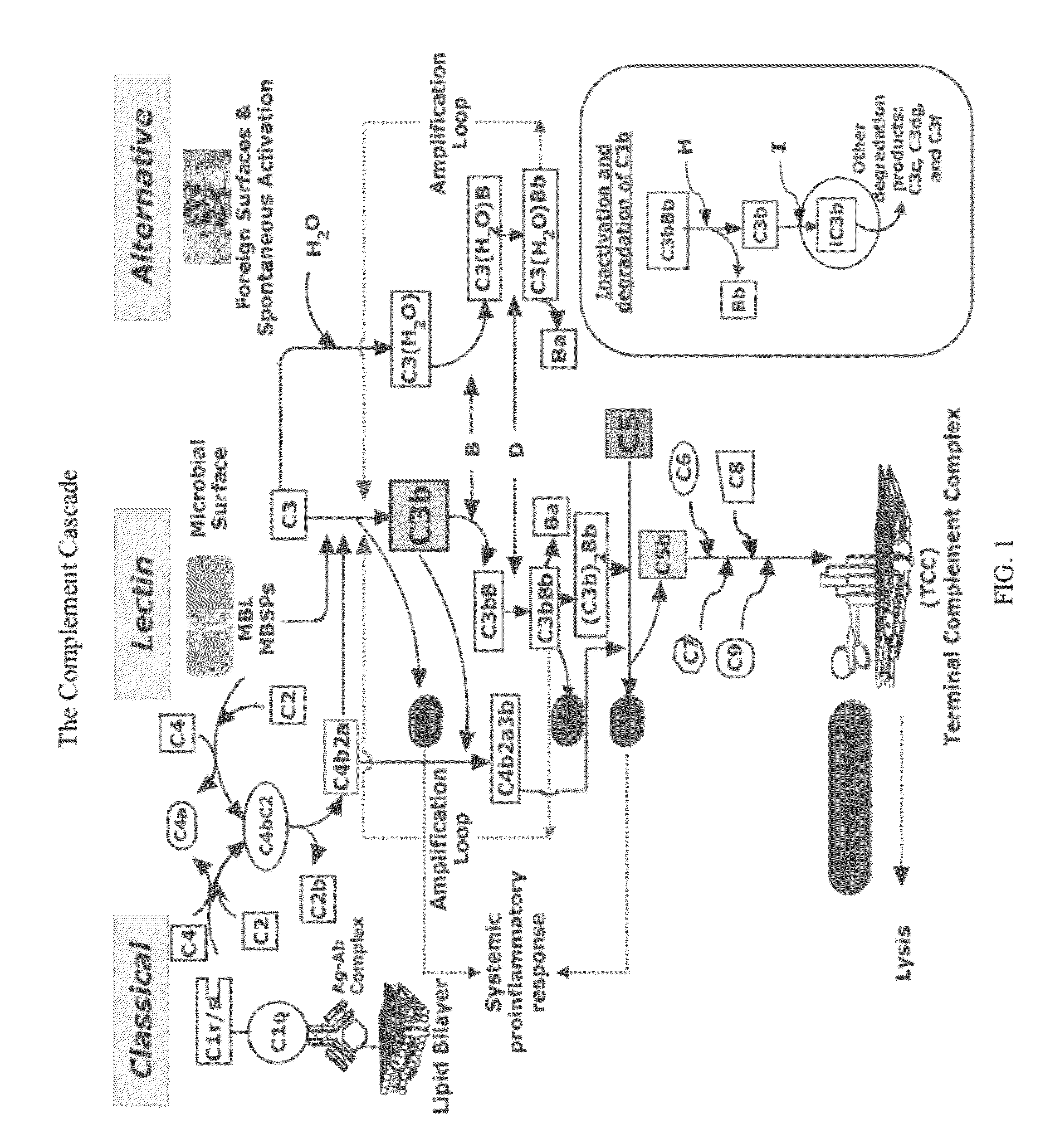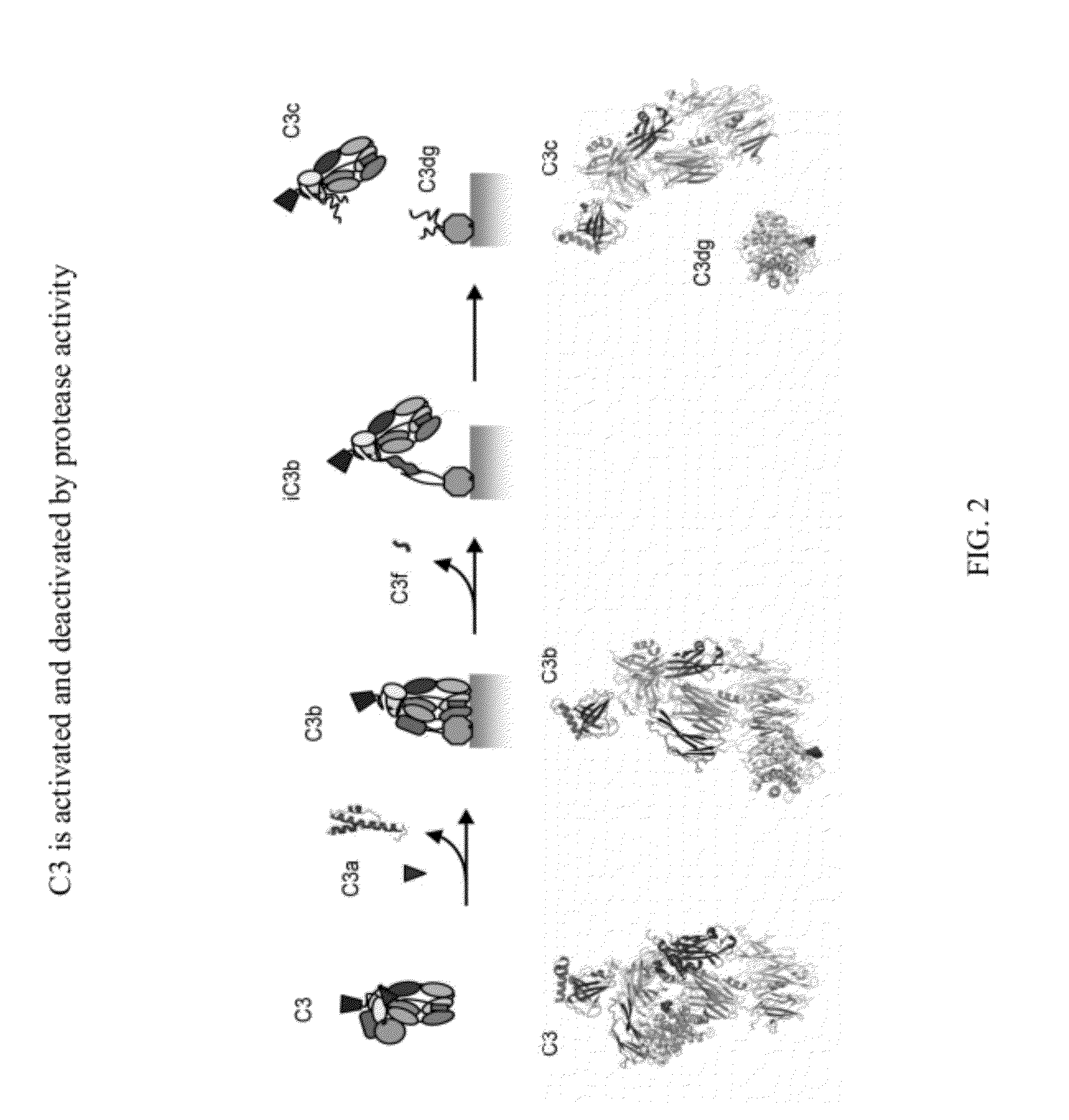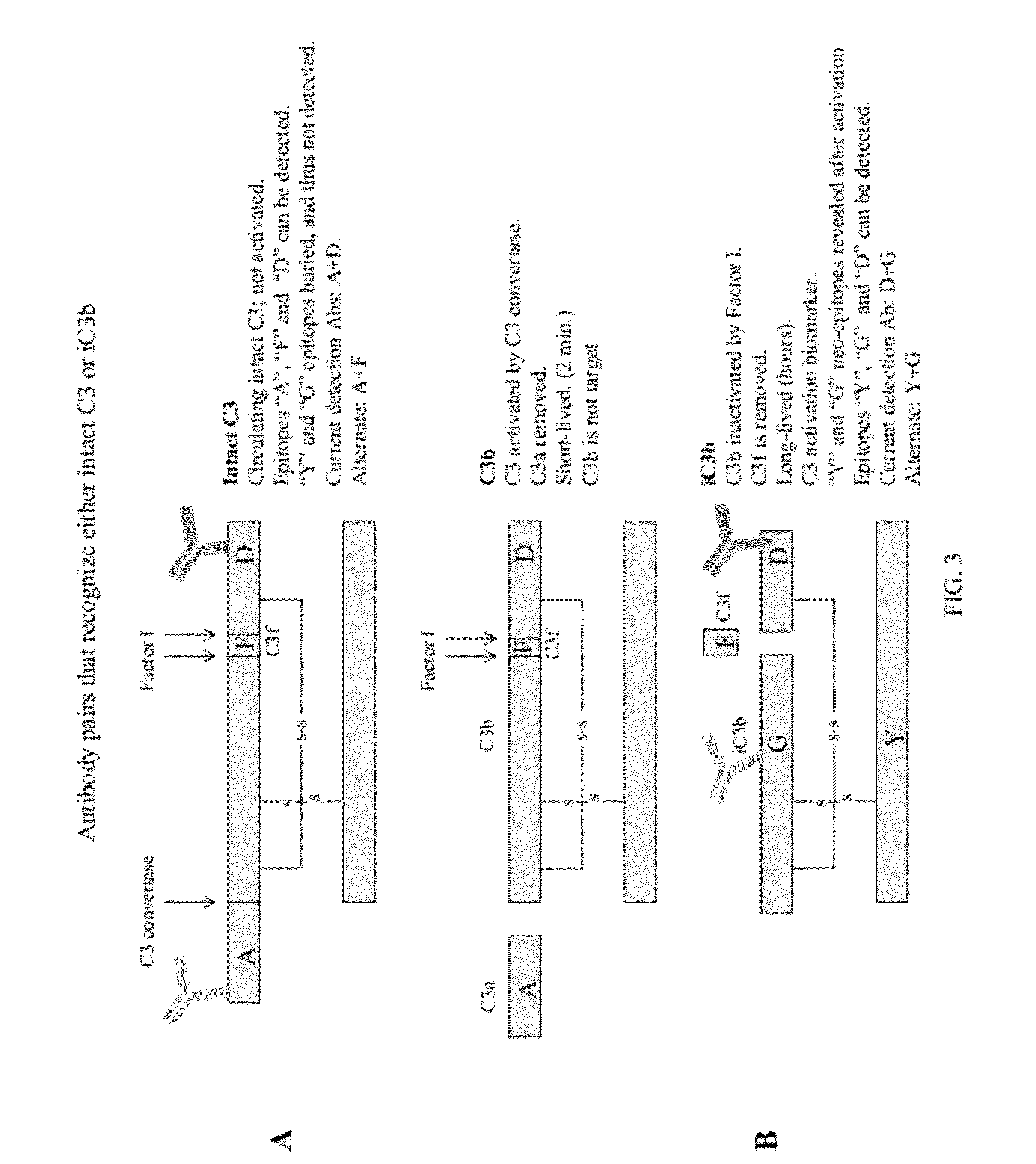Detecting complement activation
a technology of complement activation and detection field, which is applied in the direction of antibody medical ingredients, instruments, drug compositions, etc., can solve the problems of significant deterioration of a patient's condition, difficult accurate measurement of complement activation, etc., and achieve the effect of minimizing spontaneous complement activation
- Summary
- Abstract
- Description
- Claims
- Application Information
AI Technical Summary
Benefits of technology
Problems solved by technology
Method used
Image
Examples
example 1
Patient Triage
[0160]Before the first test sample is assayed, a standard curve is performed using 10 ng / ml, 30 ng / ml, 100 ng / ml, 300 ng / ml, and 1000 ng / ml of intact C3 and iC3b standards. Lateral flow immunoassay cassettes are read with an electronic reader after 20 minutes.
[0161]The test is used to gauge injury severity within 15, 30, or 60 minutes of injury. It is most useful for patients who may have suffered injuries not obvious by visual inspection. A drop of blood is collected either from an arterial line (A-line) or finger stick. A 10 ul sample is drawn up using a fixed volume pipet. The sample then mixed with 990 ul of sample buffer. The blood and sample buffer are mixed. Using a fixed volume pipet bulb, 100 ul is drawn up and pipetted onto the lateral flow immunoassay cassette containing integrated intact C3 and iC3b test strips. Alternatively, 100 ul can be applied to separate intact C3 and iC3b lateral flow assay cassettes. After 10 minutes but before 40 minutes, the casse...
example 2
Trajectory Monitoring of a Trauma Patient
[0162]At the beginning of the shift, ICU staff performs a standard curve using 10 ng / ml, 30 ng / ml, 100 ng / ml, 300 ng / ml, and 1000 ng / ml of intact C3 and iC3b standards. Lateral flow immunoassay cassettes are read with an electronic reader after 20 minutes.
[0163]The objective of trajectory monitoring is to detect changes in inflammatory and immune status of patients that have been stabilized after severe trauma. In this example, respiratory distress caused by either pneumonia or inflammatory dysfunction is to be detected. The expected patient profile is one who has an injury severity score (ISS) equal or greater to 16 and who requires ventilator assistance for breathing.
[0164]The patient receives a complement test at frequent intervals, which aligns with the time points for testing glucose levels in blood. This interval between testing is usually about two hours. Blood is collected using the same method as for glucose testing, either by A-line...
example 3
Determining Disease Severity and Effectiveness of Treatment in a Patient with Systemic Lupus Erythematosus (SLE)
[0166]Before the first test sample is assayed, a standard curve is performed using 10 ng / ml 30 ng / ml, 100 ng / ml, 300 ng / ml, and 1000 ng / ml of intact C3 and iC3b standards. Lateral flow immunoassay cassettes are read with an electronic reader after 20 minutes.
[0167]The test is used to gauge the initial severity of disease as well as the effectiveness of therapy. One of the standard diagnostics performed on SLE patients is measurement of total C3 levels. C3 levels are normally depressed in SLE patients and return to normal (>1 mg / ml) following successful treatment. However, it is not known generally whether the C3 activation has been abrogated or only slowed enough to allow normal replenishment mechanisms to restore C3 levels to normal.
[0168]At each doctor visit, a patient's blood is collected for total C3, intact C3, and iC3b tests. Only one drop is required for the combine...
PUM
| Property | Measurement | Unit |
|---|---|---|
| concentration | aaaaa | aaaaa |
| volume | aaaaa | aaaaa |
| volume | aaaaa | aaaaa |
Abstract
Description
Claims
Application Information
 Login to View More
Login to View More - R&D
- Intellectual Property
- Life Sciences
- Materials
- Tech Scout
- Unparalleled Data Quality
- Higher Quality Content
- 60% Fewer Hallucinations
Browse by: Latest US Patents, China's latest patents, Technical Efficacy Thesaurus, Application Domain, Technology Topic, Popular Technical Reports.
© 2025 PatSnap. All rights reserved.Legal|Privacy policy|Modern Slavery Act Transparency Statement|Sitemap|About US| Contact US: help@patsnap.com



